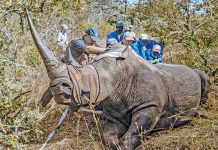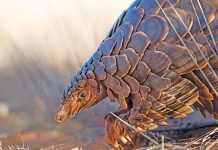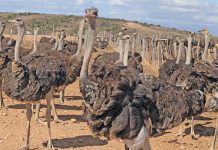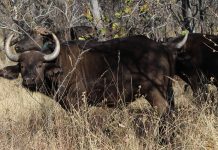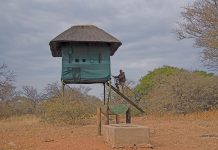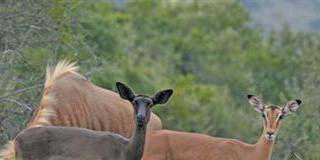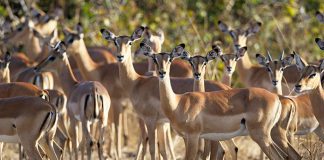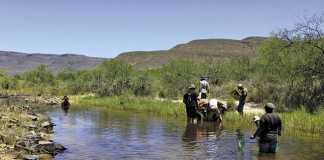Farmers should think carefully before introducing game into the Little Karoo. “The ability of this veld to support game sustainably is much lower than in the grasslands, savannah or Great Karoo,” says Ken Coetzee from Conservation Management Services in George. “And excessive small stock farming has reduced the veld’s capacity to support grazing animals even further in many areas.” Together with Jan Vlok from Regalis Environmental Services in Oudtshoorn, Ken has developed a list of the game species and stocking rates most suitable for production in the Little Karoo, as a rough guide to help landowners utilise their veld sustainably (see box).
Ground rules
As a rule of thumb, it’s best to only introduce species occurring naturally in a region. Species not occurring naturally, called extralimital species, such as the black and blue wildebeest, might put added strain on habitat already under pressure, or out-compete sensitive local species such as the common duiker, grysbok, klipspringer and steenbok.
Gemsbok and giraffe are often regarded as non-threatening extralimital species, but Ken says several studies have shown they could damage the veld. Gemsbok are a particularly difficult case as they often thrive in the Little Karoo, but may threaten its succulent biodiversity. Ken also opposes ostriches on game farms, as poor management can quickly lead to overpopulation and overgrazing.
Because of habit changes, some species which occurred naturally in the Little Karoo in the past are unsuitable for reintroduction now. These include the black rhinoceros, which requires around 2 000ha per animal in the Little Karoo.
Most farms are too small to include predators. “Farmers should tolerate losses to predators,” Ken says. “If action is necessary, it’s best to use target-specific methods to maintain predators as a natural part of the ecosystem.”
Management practices
The farm’s carrying capacity must also be assessed. “A big mistake is using the whole farm to determine carrying capacity, instead of looking at the vegetation types and their condition. The types of animals and stocking rates will vary from one farm to another,” Ken says.
Different habitats or parts of the farm should be evaluated according to the amount of sustainable feed. This largely depends on the effects of grazing, soil erosion, soil type and climatic conditions. Erosion and overgrazing should be addressed. The number of naturally occurring animals, such as hares, porcupines, rodents and insects like locusts should also be taken into account. “A population of Karoo bush rats in a river bed can consume tons of plant material over a few months,” Ken says. Veld should be monitored, as should the impact of animals, and good records of monthly rainfall will help.
Carrying capacity estimates should be reassessed regularly and adjusted according to rainfall and veld conditions. “Once you have an idea of which areas animals prefer and which plants they target, it’s a good idea to establish fixed photo-monitoring sites,” says Ken. “The areas around water points are often the first to be affected and good sites to establish photo monitoring plots. Veld degradation is often a gradual process that isn’t detected unless you look at reference photos.”
Get expert advice
Ken advises farmers to consult Cape Nature or a game expert with experience in the Little Karoo before erecting any game fences. “In many cases game fences create barriers threatening naturally migrating and dispersing species,” he explains.
Farmers should also source animals from within the Little Karoo, or as close to it as possible, to reduce feeding stress losses and transportation stress when animals are sourced from the northern provinces, Natal or Namibia. The animals will also be better adapted to the local environment and better able to survive local parasites and diseases. To prevent expensive mistakes, Ken advises farmers to consult an experienced veld and game management consultant before animals are bought.
Contact Ken Coetzee on (044) 870 8472 or Jan Vlok on (044) 279 1987, or e-mail [email protected].

